BioRegions: A Brief History
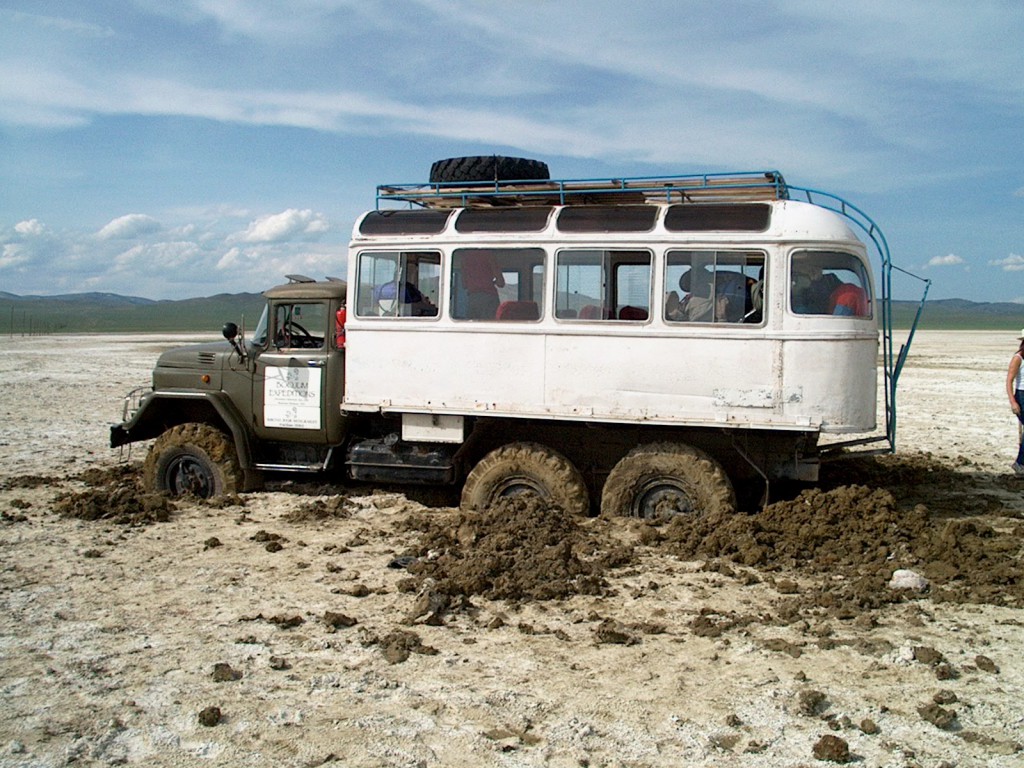
Thirteen undergraduate students from Montana State University undertook the first BioRegions work trip with Teki and Mishig in the Darkhad Valley.
Image: Our truck stuck in the salt flats
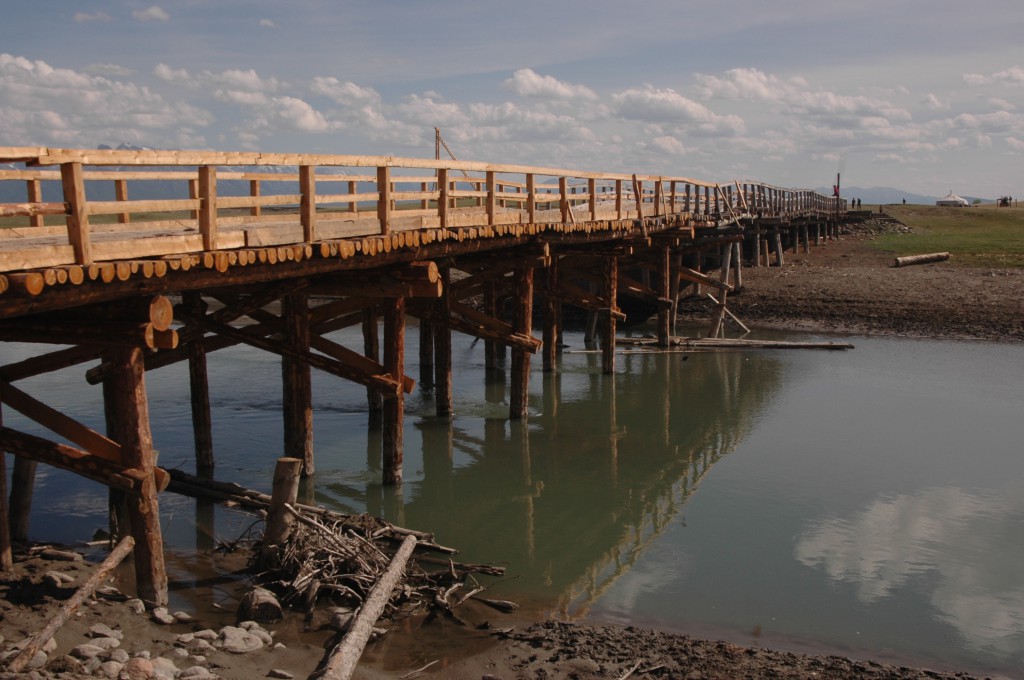
Students raised $700 in a Lindley Park rock music concert to build a new bridge in the Darkhad Valley.
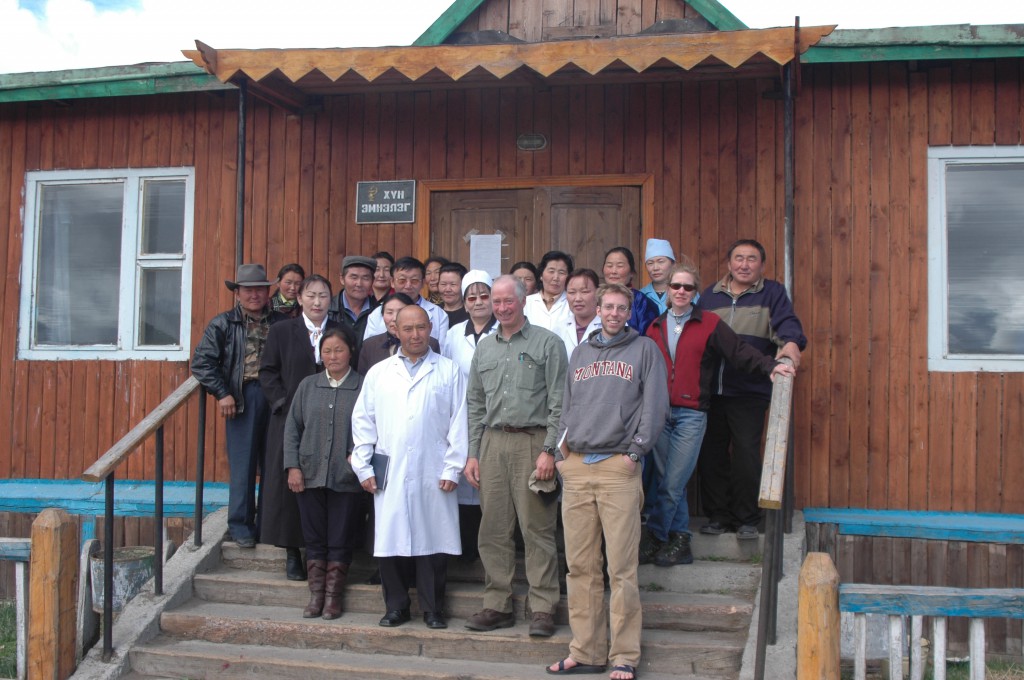
BioRegions began years of collaborations with Renchinlhumbe Hospital, with an initial $200 donation to establish a hospital pharmacy. Over the years the pharmacy became self-supporting, and now is a private enterprise.
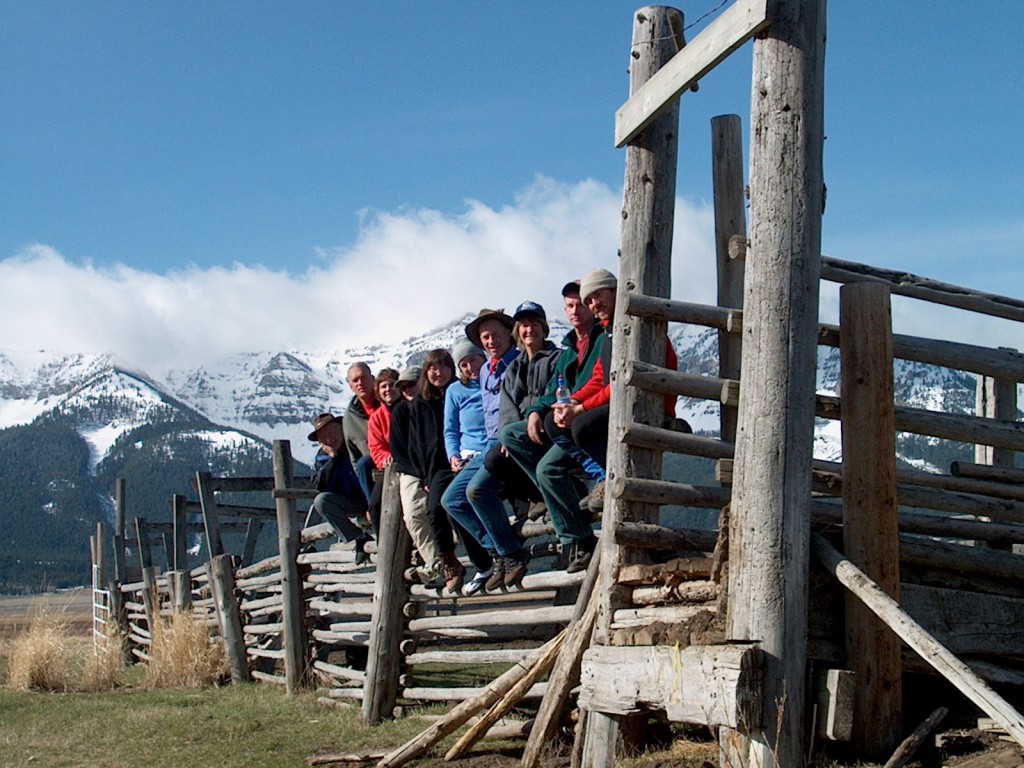
Participants in the 2001 program visited the Centennial Valley to speak with local residents about the local quality of life.
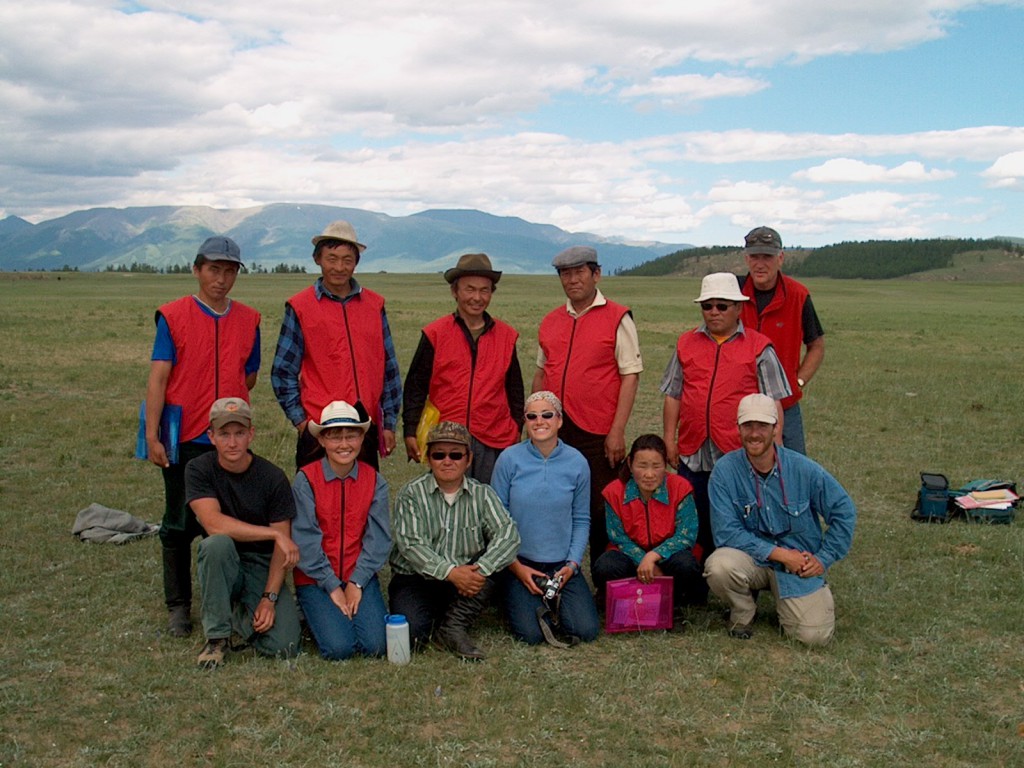
At request of Renchinlhumbe soum government, BioRegions staff gave basic environmental science and management training to 8 environmental officers. We supplied information and training on erosion, grazing methods, map & compass skills, forestry and water quality analysis methods and poaching of wild animals. We funded a demonstration sand dune stabilization and animal control fence and provided distinctive vests, patches and basic office supplies.
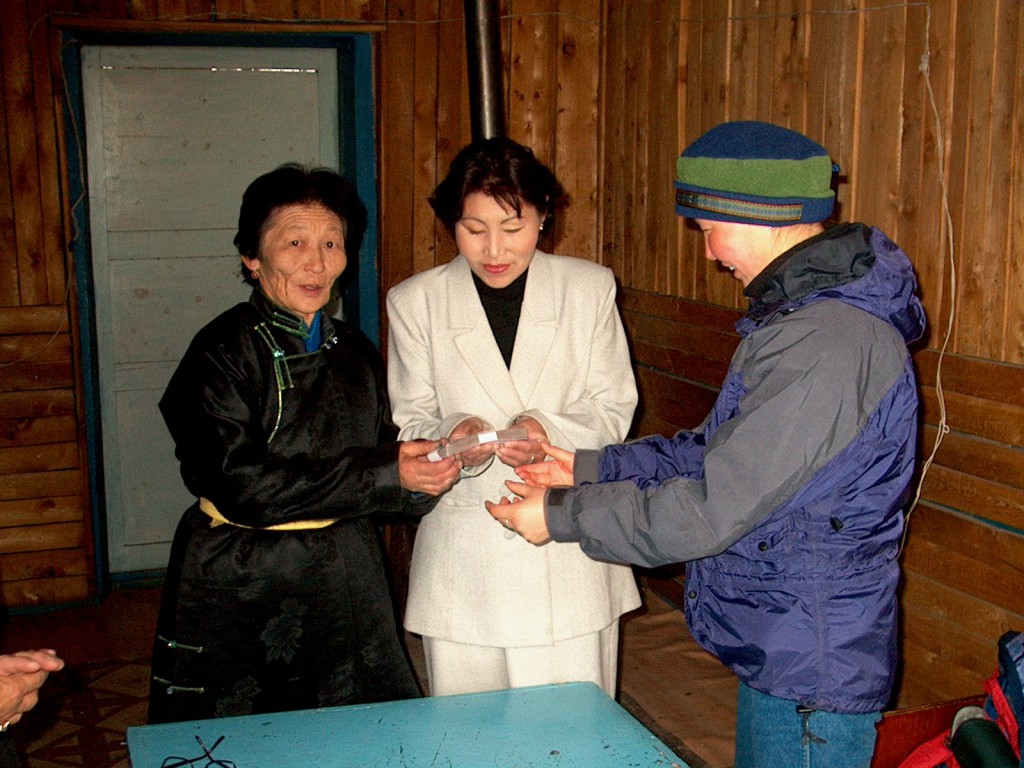
In collaboration with the school, at the director’s request, BioRegions and Bozeman Sunrise Rotary Club provided funding and assistance with numerous renovations and improvements to the school.
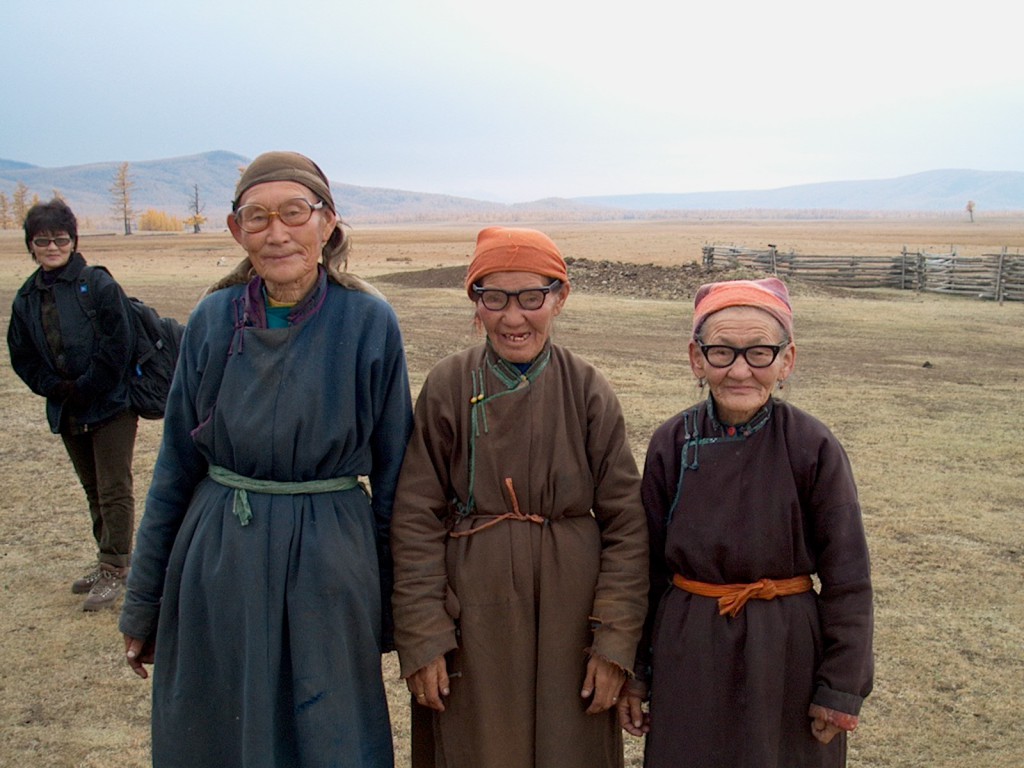
BioRegions fitted and distributed the first delivery of donated glasses from Baker Opticians (Bozeman, MT). This annual program has supplied more than 1700 pairs of prescription and reading glasses, and more than 1000 pairs of dark glasses and ski goggles to Darkhad Valley residents, donated by Baker Opticians, Bridger Bowl Ski Area, and the Northwest Lions Eyeglass Recycling Center of Lions Clubs International.
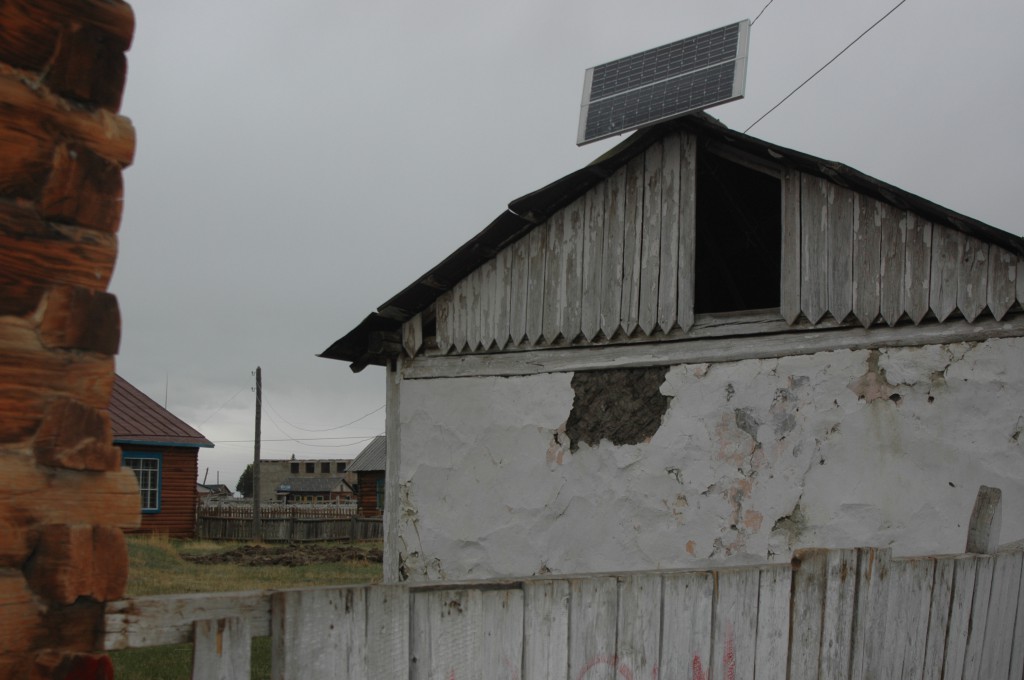
BioRegions installed solar panels on the Renchinlhumbe School library, funded by the Bozeman Sunrise Rotary Club
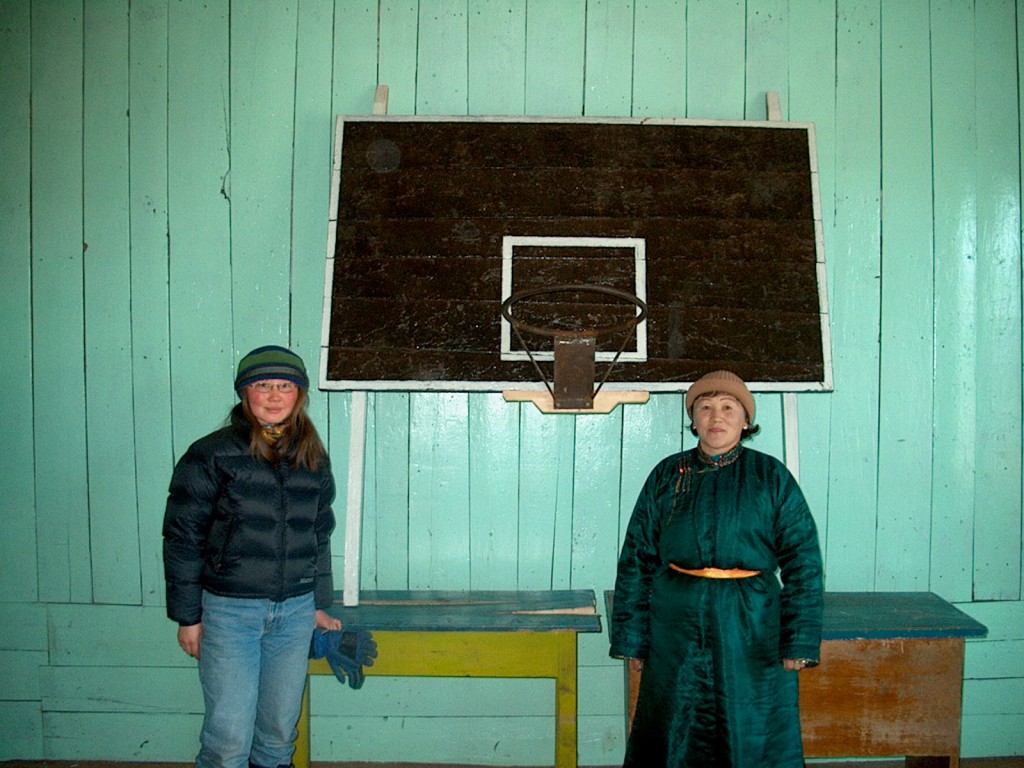
BioRegions facilitated the renovation of the Renchinlhumbe School gym, funded by the Bozeman Sunrise Rotary Club
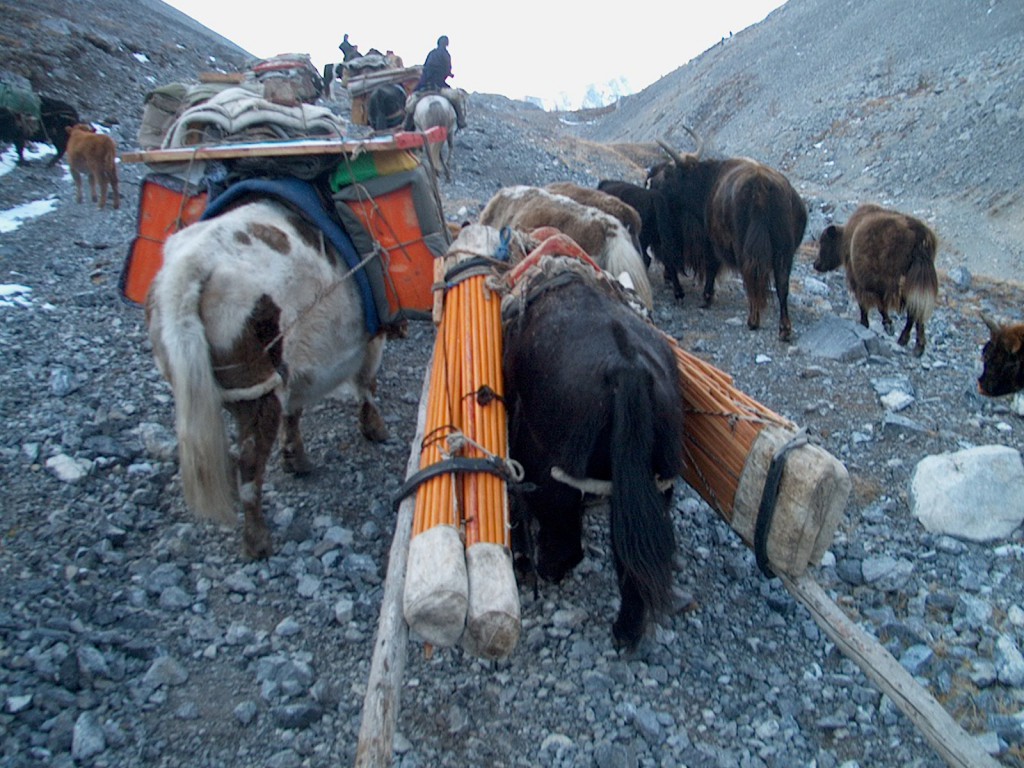
National Geographic photographer and former BioRegions board member Gordon Wiltsie, writer Glen Hodges, and BioRegions graduate student Teki Tsagaan and Director Cliff Montagne accompanied herder families on their fall migration.
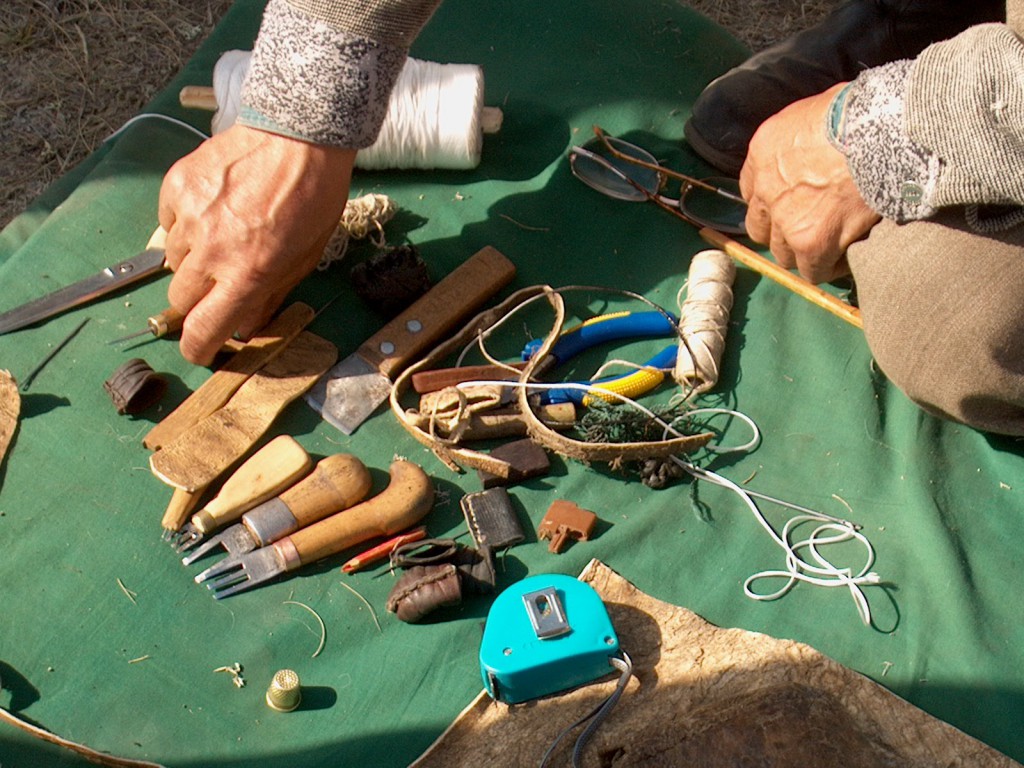
A grant from The International Foundation helped BioRegions begin a series of school support and artisan development grants in the Darkhad Valley which continue to develop. Renchinlhumbe School received assistance for its music, art, literature, and shop programs. Local artisans received support for jewelry, blacksmithing, clothing making, carpentry and furniture making.
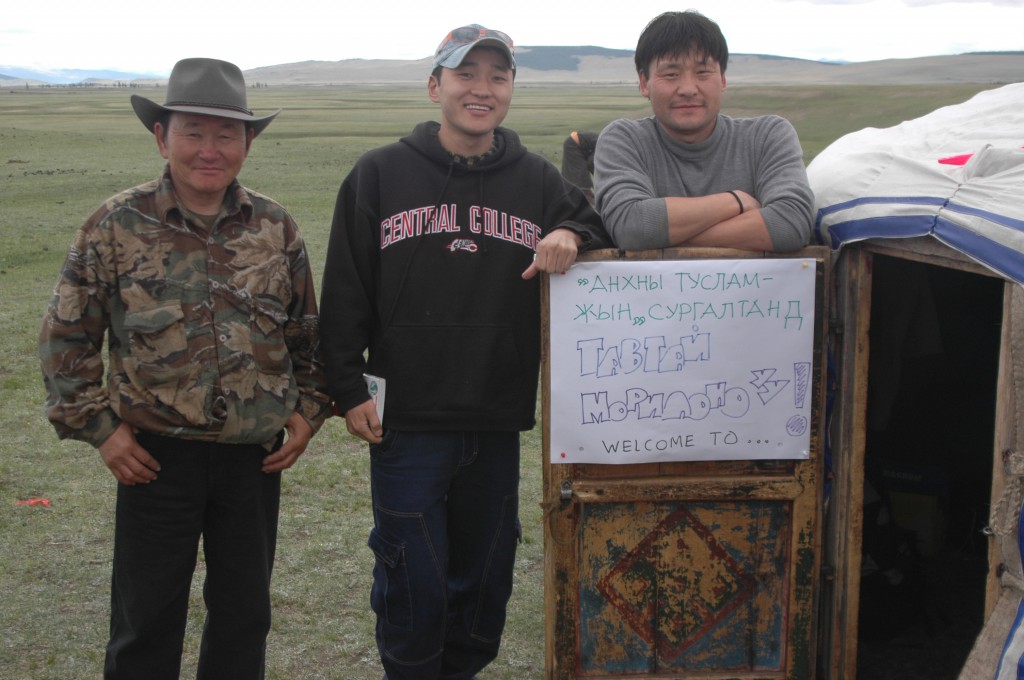
BioRegions facilitated Mongolian Red Cross first aid trainings for herder families; more than 100 people were trained over 2 years. In 2006, Director Cliff Montagne accepted the Silver Humanitarian Medal from the Red Cross Society of Mongolia on behalf of BioRegions for these efforts.
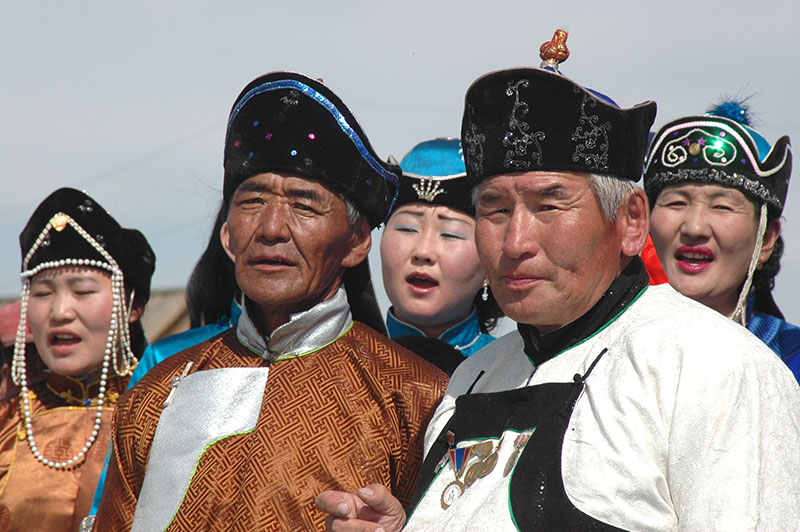
BioRegions coordinated and sponsored the first annual Darkhad Blue Valley Festival, which showcases traditional painting, sculpting, instrumental music, song, dance, and poetic oratory.
Image: Singers from Ulaan Uul
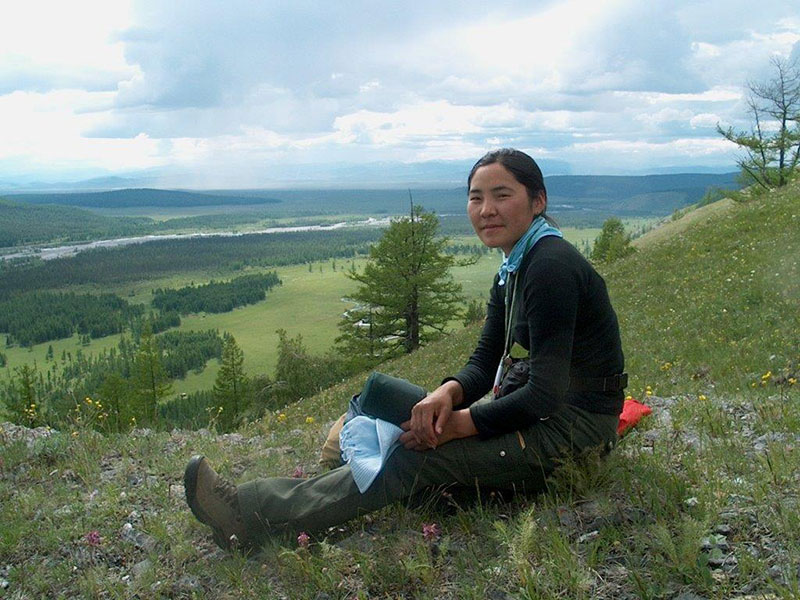
Enkhjargal (Eegii), moss biologist for Mongolia Institute of Botany, conducted a 3-year field study of Darkhad Valley mosses. Read the summary report »
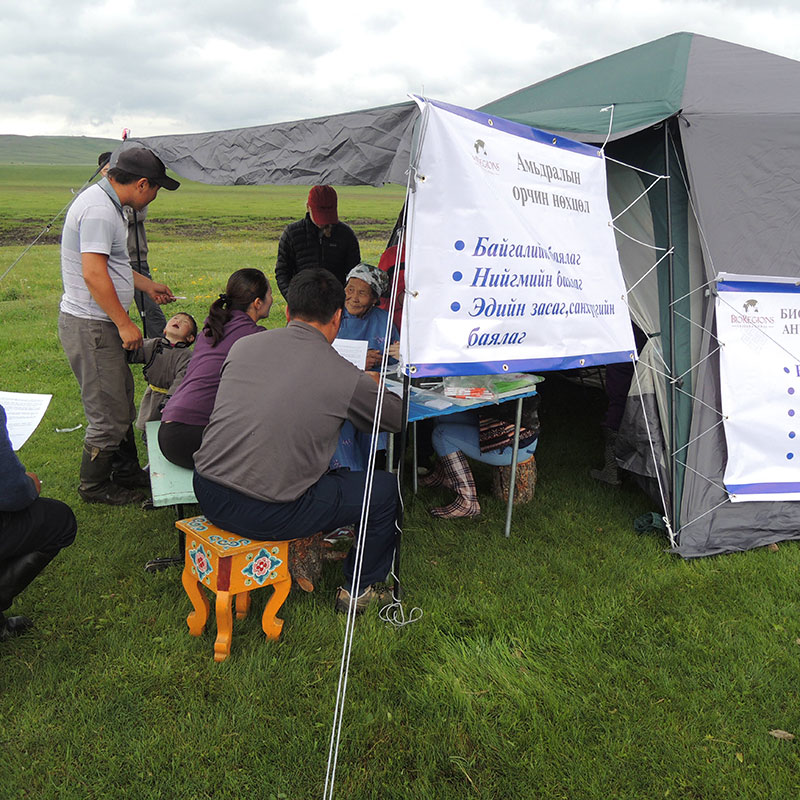
In 2007, the BioRegions Health Team started annual health screenings for countryside citizens in cooperation with local soum hospitals. The health screenings have continued annually as the Health Team visits different locations in Huvsgul and Bulgan aimags. By June 2014, twelve hundred people in Renchinlhumbe, Bayanzurkh, Ulaan Uul and Tsagaan Nuur soums of Huvsgul aimag and Orkhon soum of Bulgan aimag had participated in the screenings.
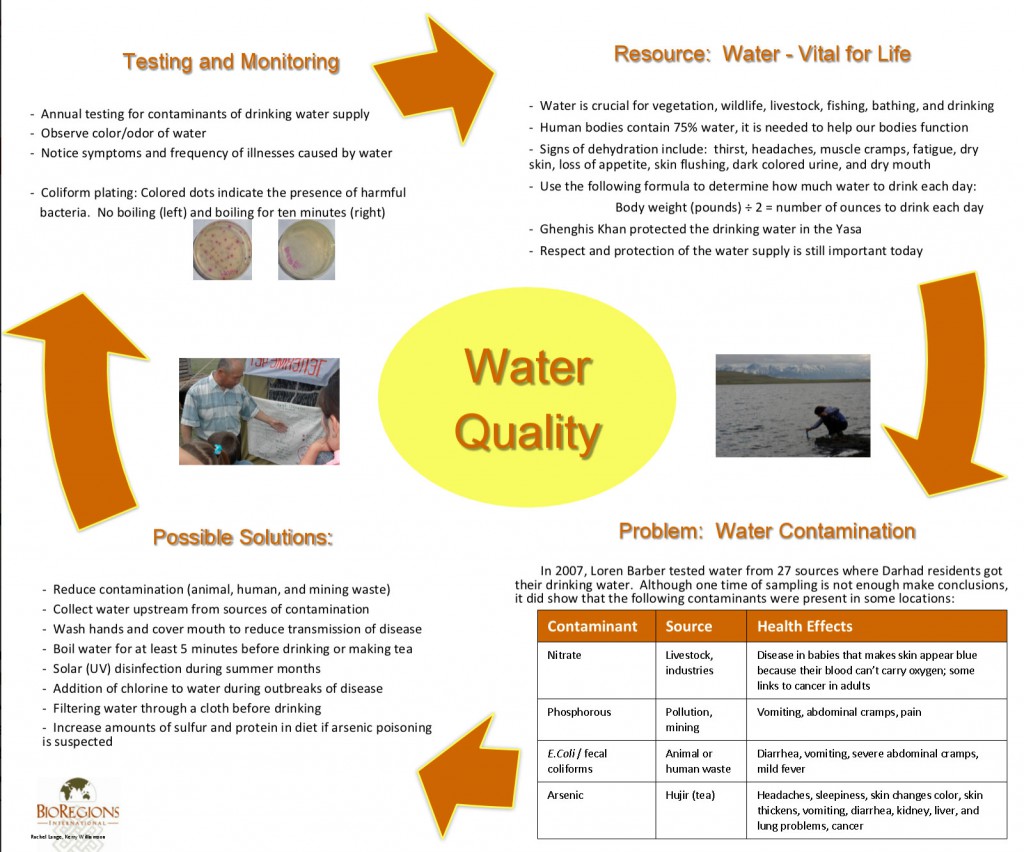
Loren Barber discovered fecal coliform in Darkhad household drinking water in her water quality study conducted during the BioRegions work trip. BioRegions developed an informational poster for community members to address the issue as part of an environmental health education initiative.
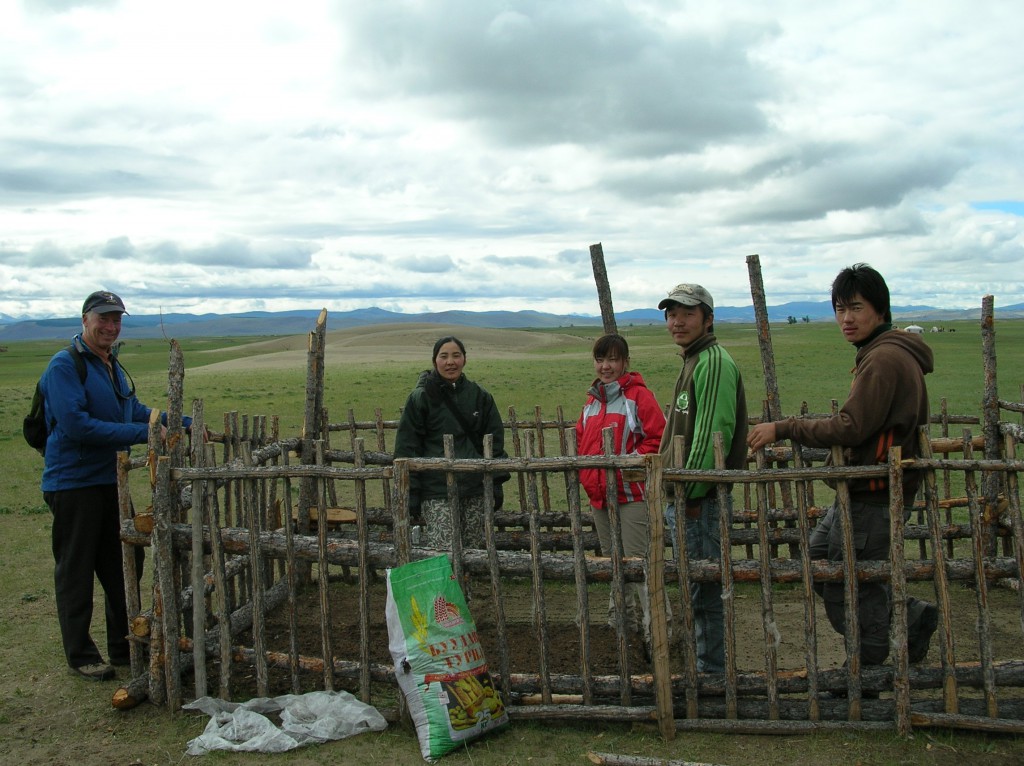
University students and staff join the BioRegions work trip, conducting a revegetation study in Darkhad Valley
Image: University students and staff with moss biologist Enkhjargal and Cliff in a study plot
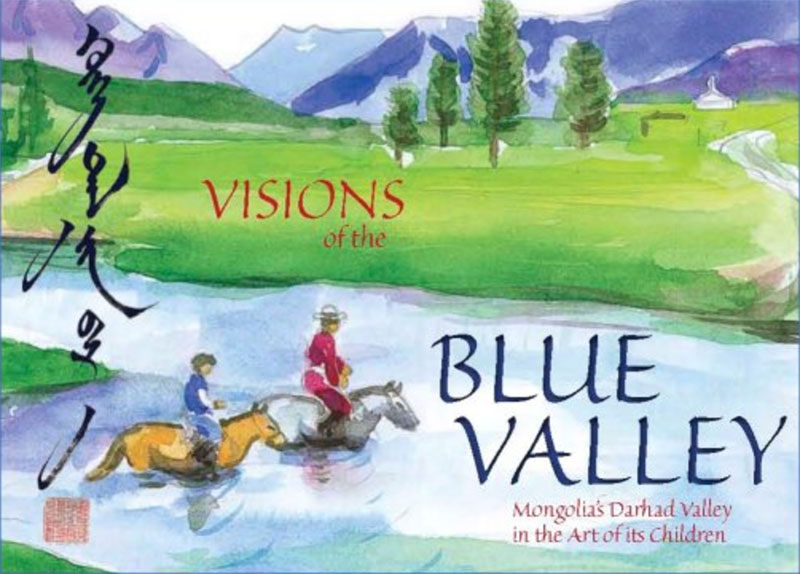
Renchinlhumbe School student participants in BioRegions art and literature contest provide materials for a book portraying their nomadic way of life. Learn more »

Darkhad Valley BioRegions coordinator Mishig introduced BioRegions to the people and countryside of Bayanzurkh soum, expanding BioRegions activities to the outskirts of the valley.
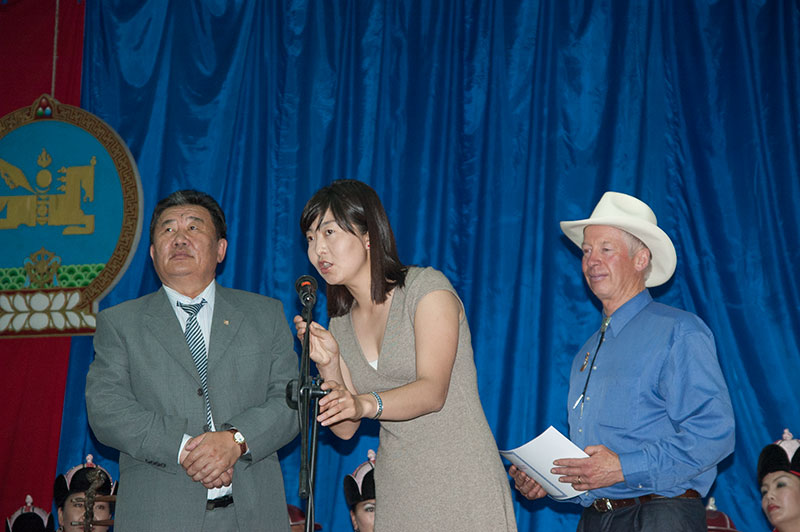
Director Cliff Montagne was awarded the Governor’s Award to commemorate years of service in promoting well-being for the environment and people of the Darkhad Valley. The award was presented at the Darkhad Blue Valley Festival, held in the aimag capital of Murun for the first time.
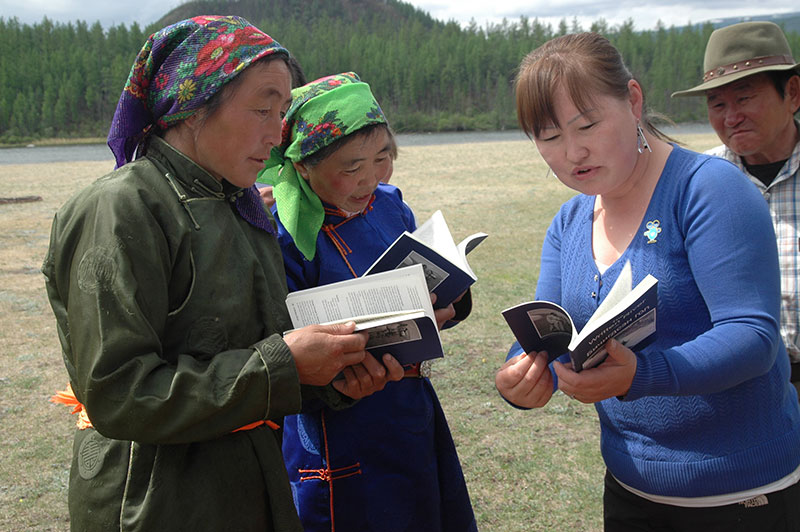
BioRegions brings copies of The Written River to share with the Bayanzurkh and Renchinlhumbe communities. BioRegions facilitated the travel of Dartmouth College graduate Shannon Prince to the Darkhad Valley for a Lombard Fellowship project. Prince interviewed Tuvan reindeer herders and Darkhad citizens for this ethnographic reference book of traditional practices. BioRegions Ulaanbaatar Coordinator Sunjee (Sunjidmaa Tsagaan) translated the book and directed the publication.
Image: Sunjee and Mishig distribute books at the Boojum Lodge at Shisged/Tengis River junction
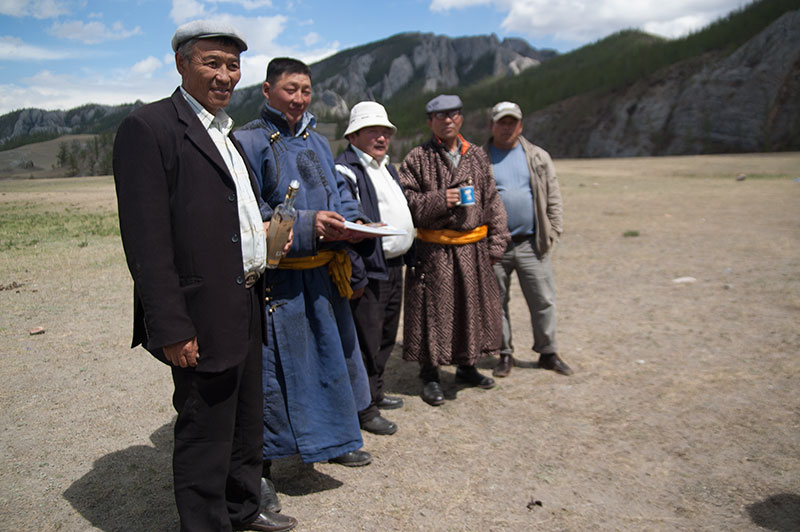
Bayanzurkh officials thanking BioRegions for hosting Darkhad Blue Valley Festival
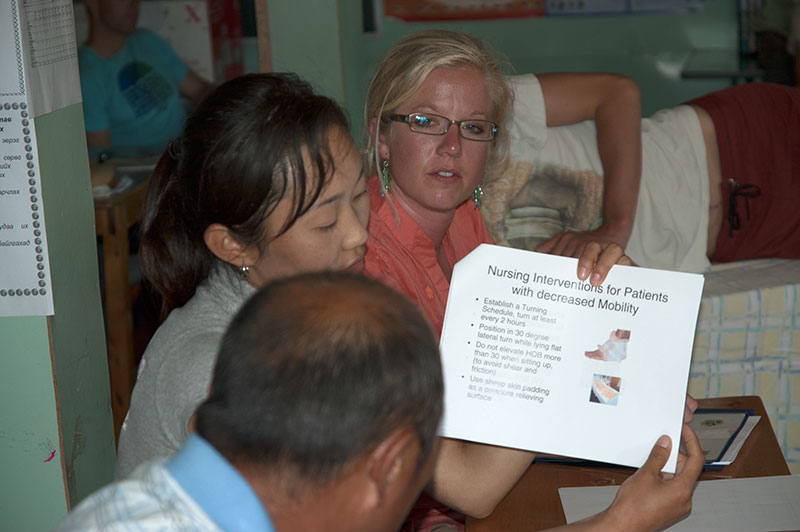
Nurse Amy Braaksma shares techniques from Montana with Renchinlhumbe Hospital staff, translated by Oyungerel.
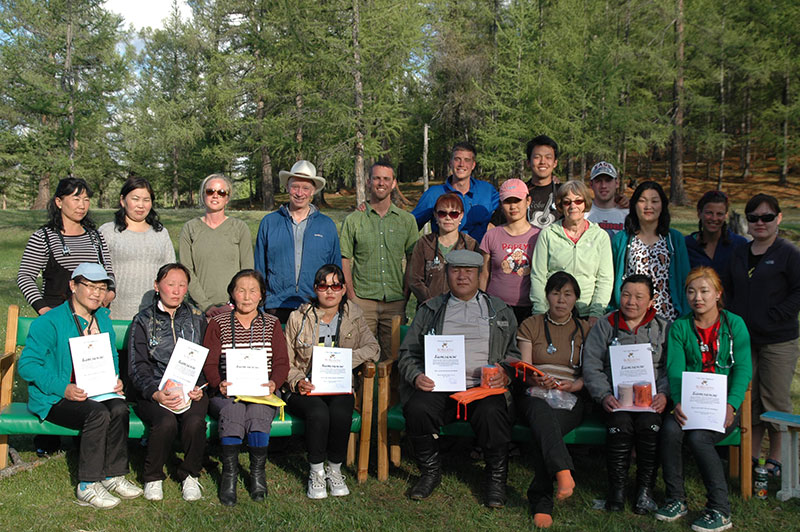
The BioRegions health team, led by Susan Gibson of Montana State University, collaborated with Darkhad Valley doctors to provide update training for \”bag doctors\” (similar to physician’s assistants). Here Dr. Peder Anderson, now a practicing physician in Bozeman, MT, presents training certificates, along with donated Sam splints, ace bandages, and stethoscopes to participants.
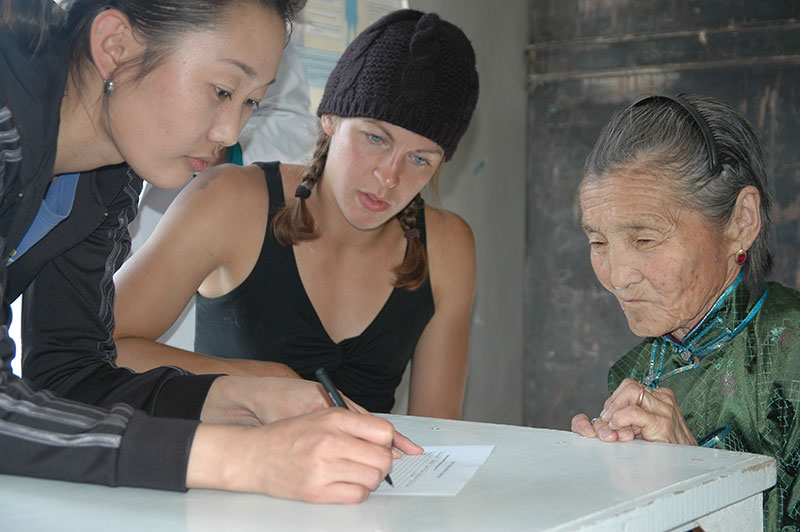
Lena Peterson conducts nutrition survey with help of Health Team translator Oyungerel.
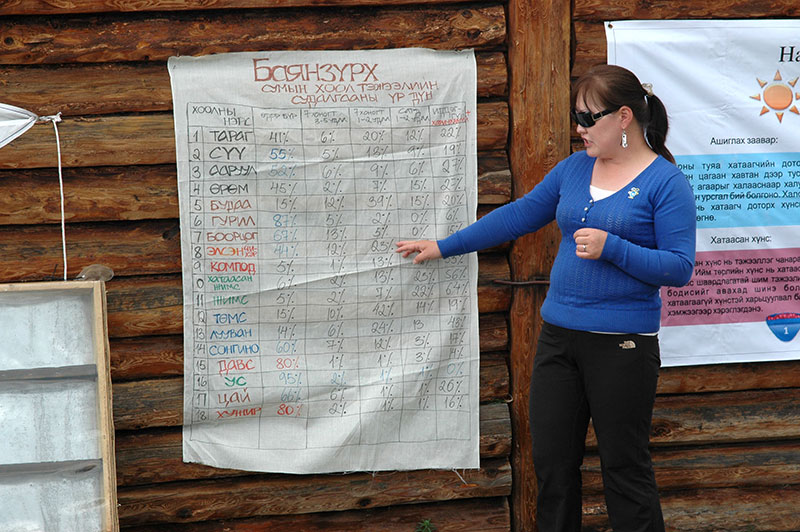
Sunjee showing results of Lena Peterson’s nutrition survey
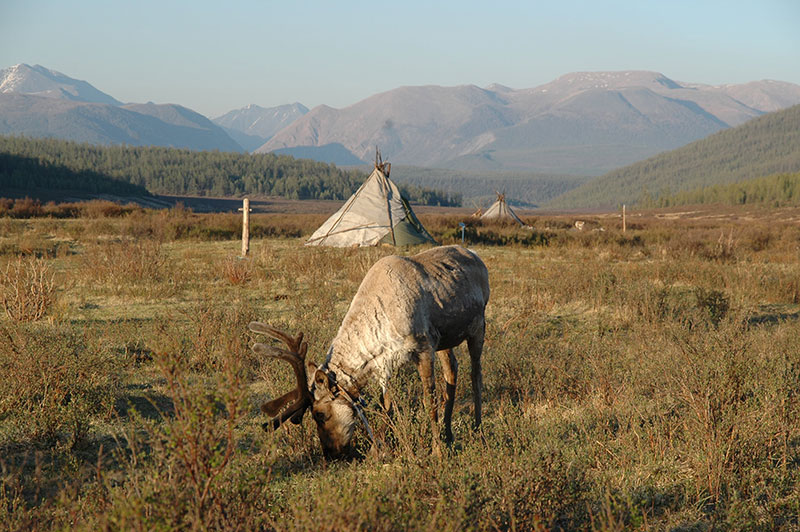
The BioRegions work trip visited the East Taiga Reindeer Herder group, conducted health screening, examined artisan tools and products, and donated clothing from Bridger Bowl Ski Area and copies of The Written River.
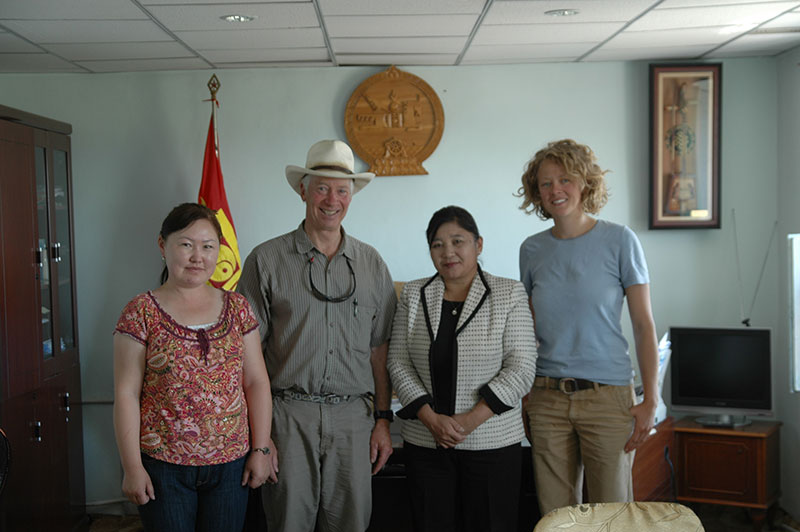
BioRegions work trip visited Orkhon, met the governor and her staff, visited with a herder family, and agreed to bring the BioRegions 2013 work trip to begin community partnership projects in Orkhon.
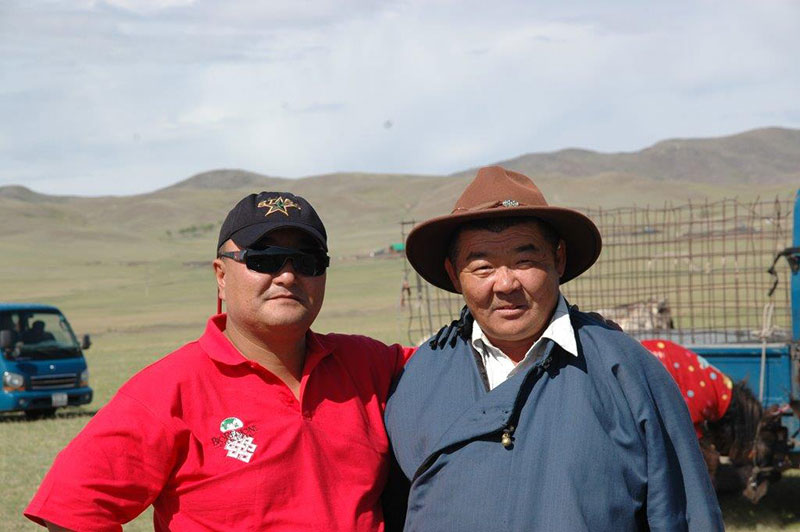
Turbat, a native son, oriented BioRegions on Orkhon history, lifestyles, and current challenges
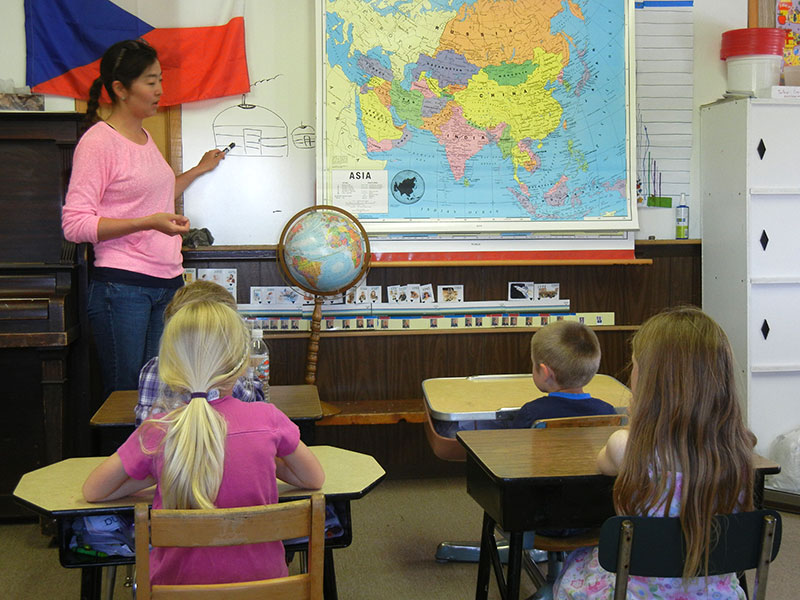
BioRegions students and staff visit the Stoneberg-Holt family on their ranch in Eastern Montana to learn more about Holistic Management and rancher perspectives coming from Montana. In return, graduate students Badmaa Dovchin from Mongolia and Sarina Bao from Inner Mongolia helped Tallow Creek School students from neighboring ranches understand some basics of Mongolian geography and culture.
Image: Badmaa Dovchin shows Tallow Creek students details of ger life in Mongolia.
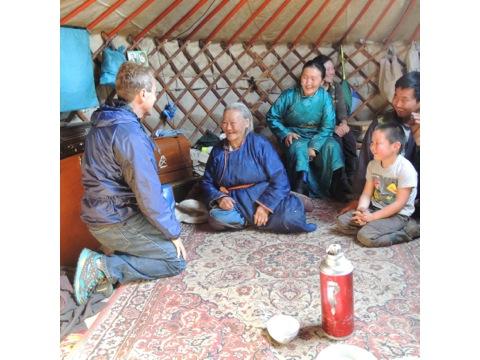
Bozeman Doctor Erich Pessl consulting with a family in the Darkhad. (Photo credit Cliff Montagne)

The BioRegions Health Team conducted screenings and consultations with Dr. Mathew Westmark in a remote country side location and in the soum center
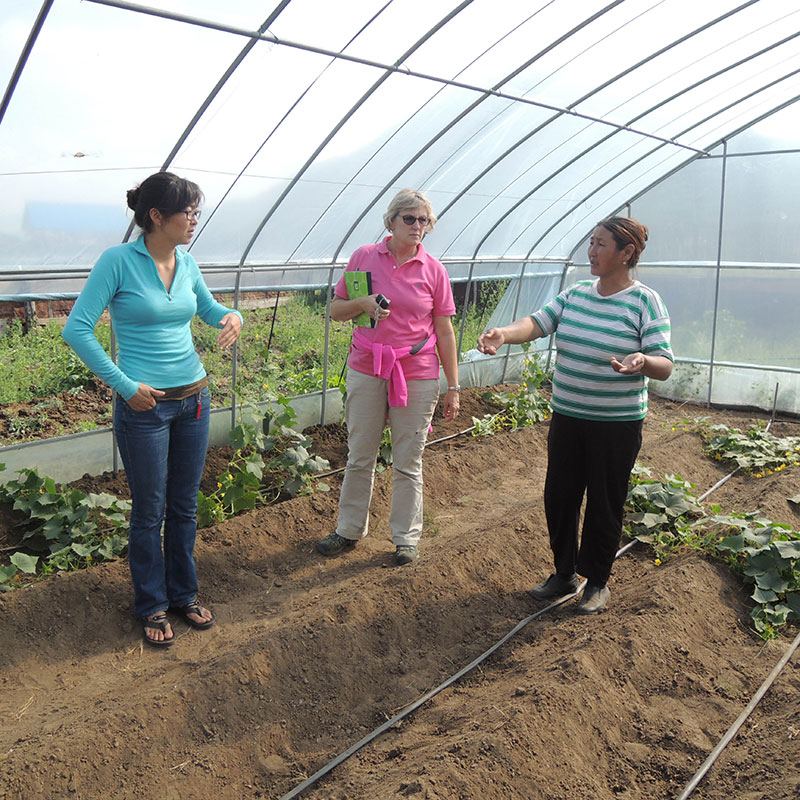
With assistance of staff person Badmaa, Montana State University business professor Martha Joh Reeder and students consulted with local businesses on best practices for their enterprises
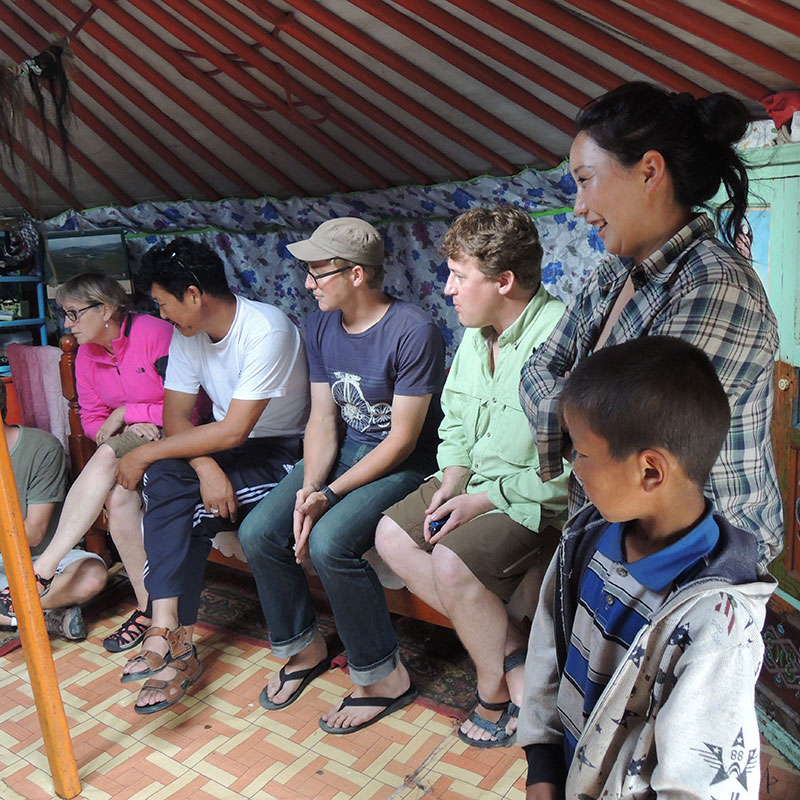
BioRegions staff and Montana State University Fulbright Scholarship graduate student Badmaa worked with the Munkhbat herder family to document effects of different grazing intensities on winter pastures.
Image: The Munkhbat family hosts BioRegions work trip participants for their first ‘ger’ visit.
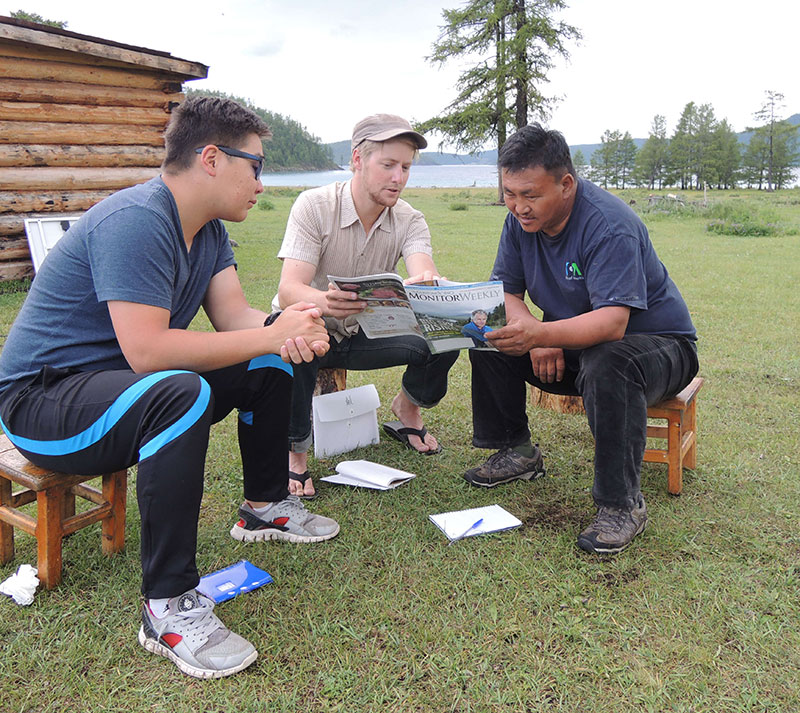
Cliff, Setsen, and student Sam Atkins visited Tumursukh, Director of Darkhad Valley Protected Areas, to discuss needs and potential cooperation. Setsen, Sam Atkins, and Tumursukh examine an article explaining how the research of Headwaters Economics documents the importance of environmental quality in supporting the regional economy of the Greater Yellowstone Ecosystem
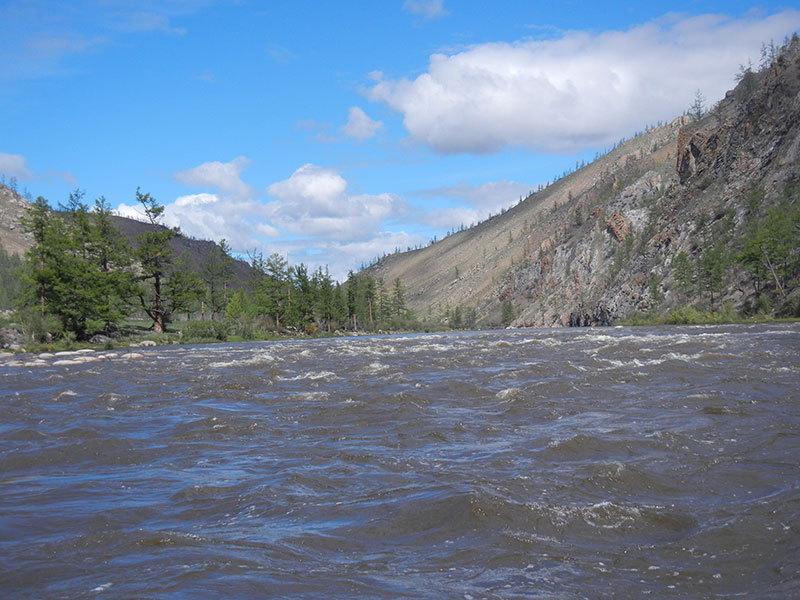
BioRegions visits the Delger Murun River with board member Mark Johnstad to explore collaborative projects with local communities and Mongolia River Outfitters.
Image: The river in full-bank stage, laden with sediment
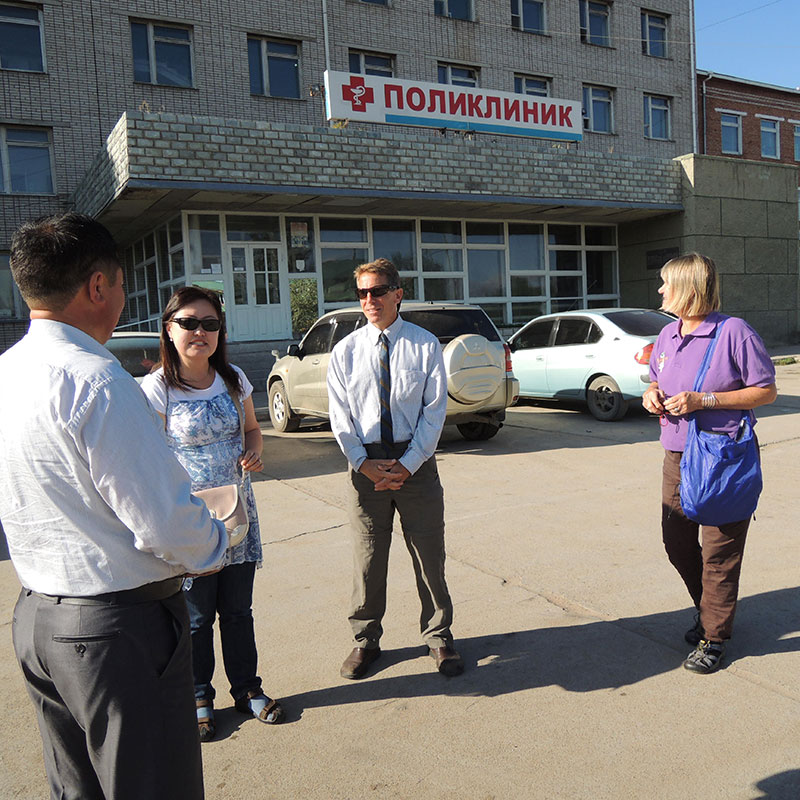
BioRegions makes a courtesy visit to the aimag hospital in Murun before visiting the local hospital in Bayanzurkh.
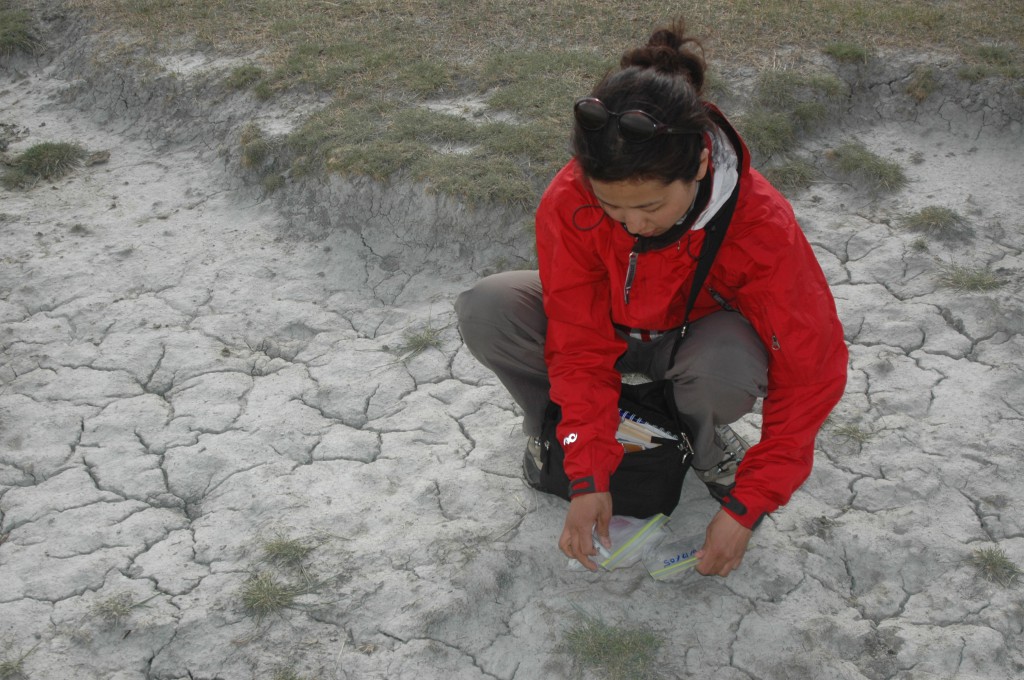
Dr. Natsuko Hamarura publishes findings documenting that microbes are converting arsenic in hujir salt to potentially non-lethal chemical states in an alkaline saline lake in the Darkhad Valley. Dr. Hamarura’s project is follow-up to Loren Barber’s Master’s thesis on Darkhad Valley hujir.
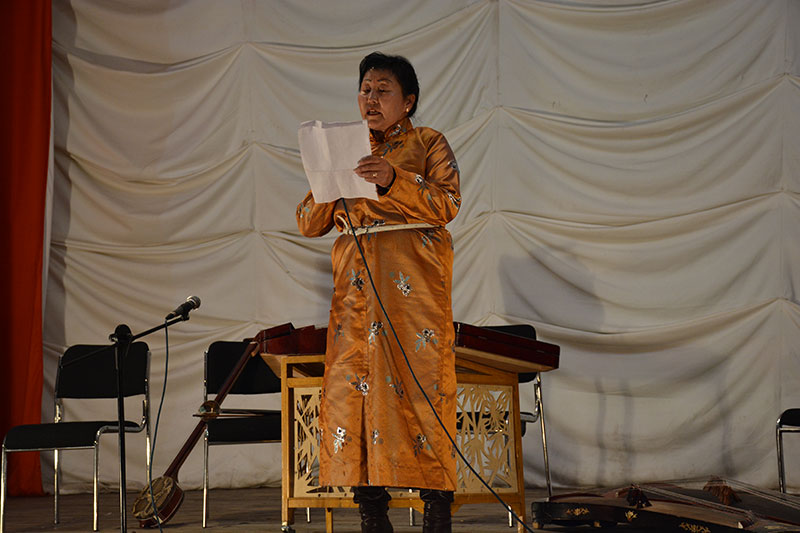
Poetry reading at 2014 Darkhad Blue Valley Festival

Darkhad Valley rangers sharing their holistic plan at the ranger training.

Kristin Legg (Greater Yellowstone Network Program Manager, U.S. National Park Service) explains US National Parks history at Darkhad Valley ranger training

Dr. David Thoma working with Mongolian Park Service rangers in the Darkhad Valley
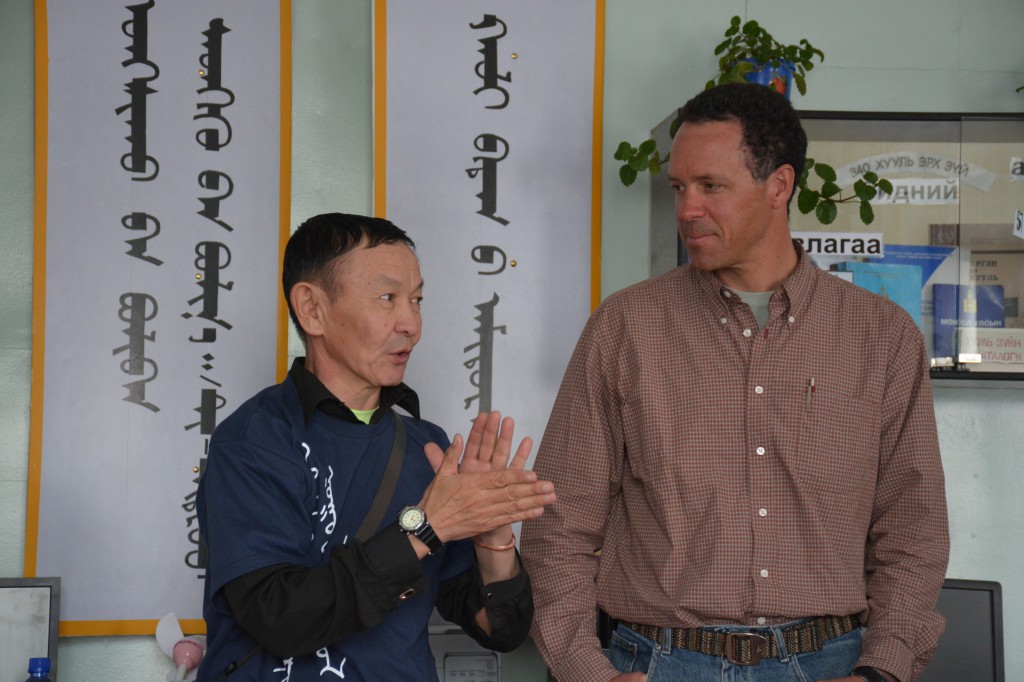
Tsend and Dr. David Thoma (hydrologist with the U.S. National Park Service, Northern Colorado Plateau and Greater Yellowstone Networks) present at Darkhad Valley Protected Areas ranger training

Dr. Lance Craighead using GIS to document grizzly bear sightings with rangers of the Darkhad Valley Special Protected Areas and National Parks.
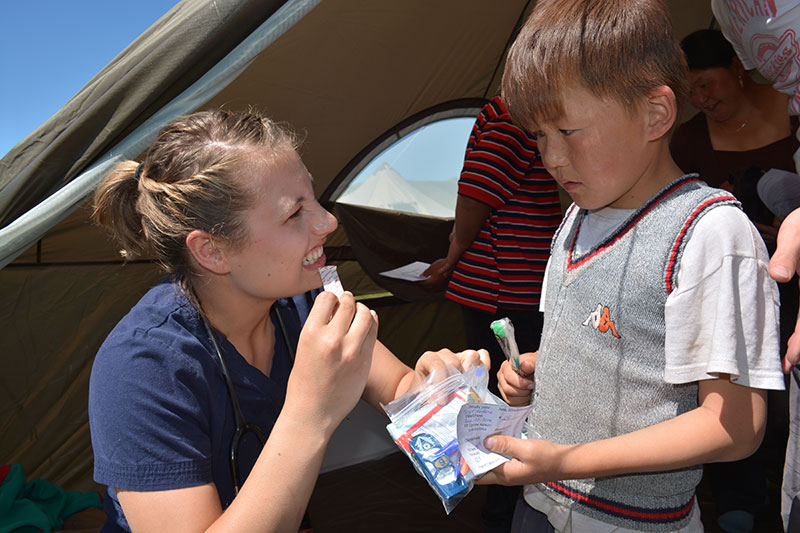
Montana State University nursing student Jessie Hardin conducts a dental care demonstration in the Darkhad Valley
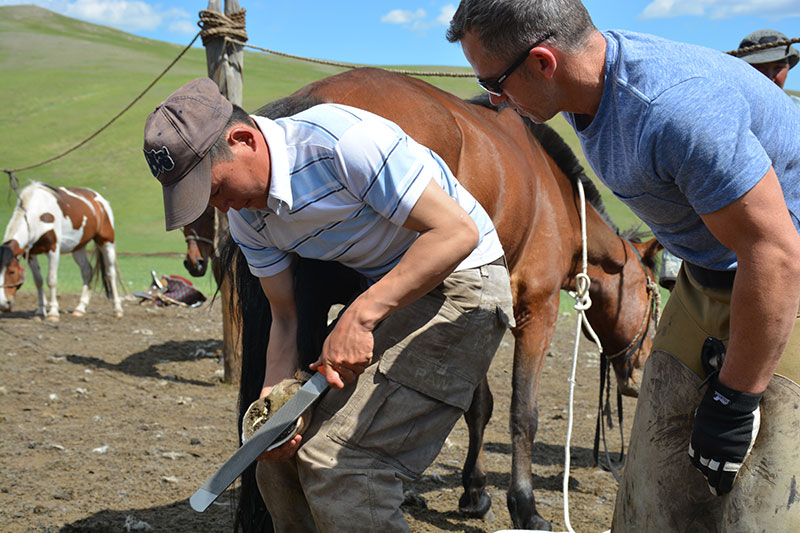
BioRegions delivered donated farrier tools to Mongolia, from Susan & Early Craig and Dr. Shannon Moreaux. Pictured: Dr. Shannon Moreaux coaches herder Munkhbat on hoof trimming.
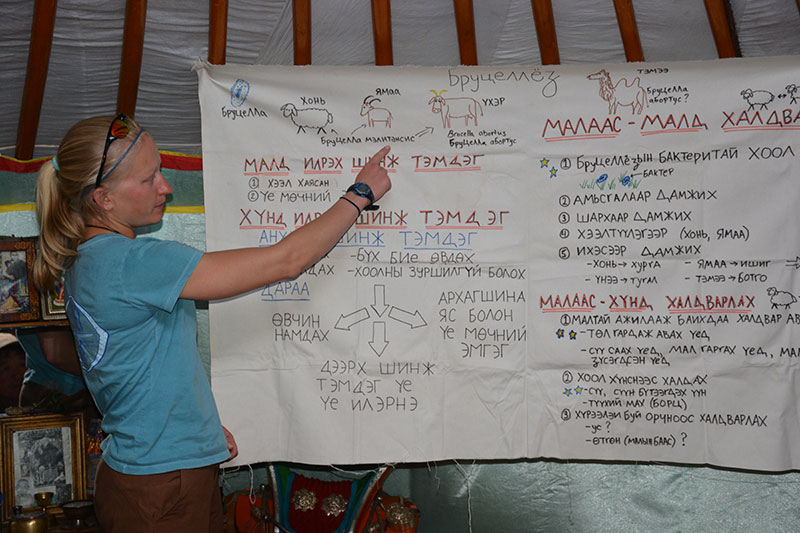
Colorado State University veterinary student and brucellosis researcher Jen Higgins conducts a workshop, in the Mongolian language, regarding brucellosis
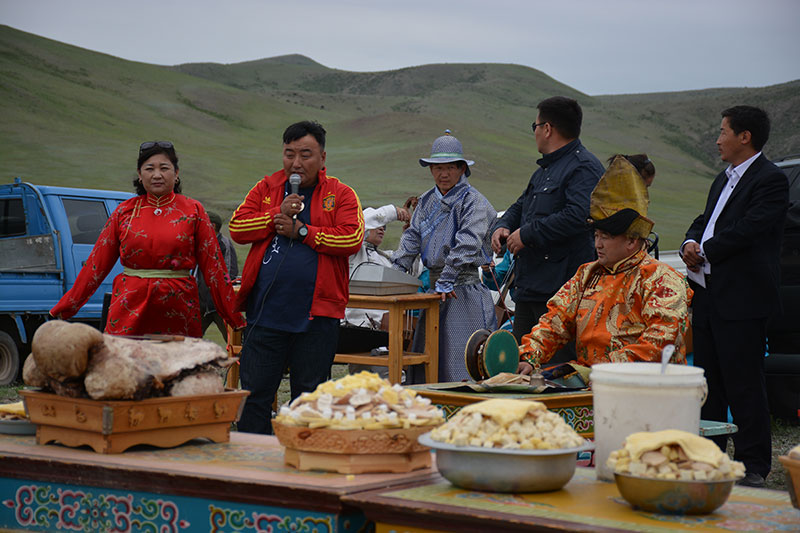
Turbat, BioRegions coordinator in Orkhon soum, Bulgan aimag, explains BioRegions programs at annual Children’s Day
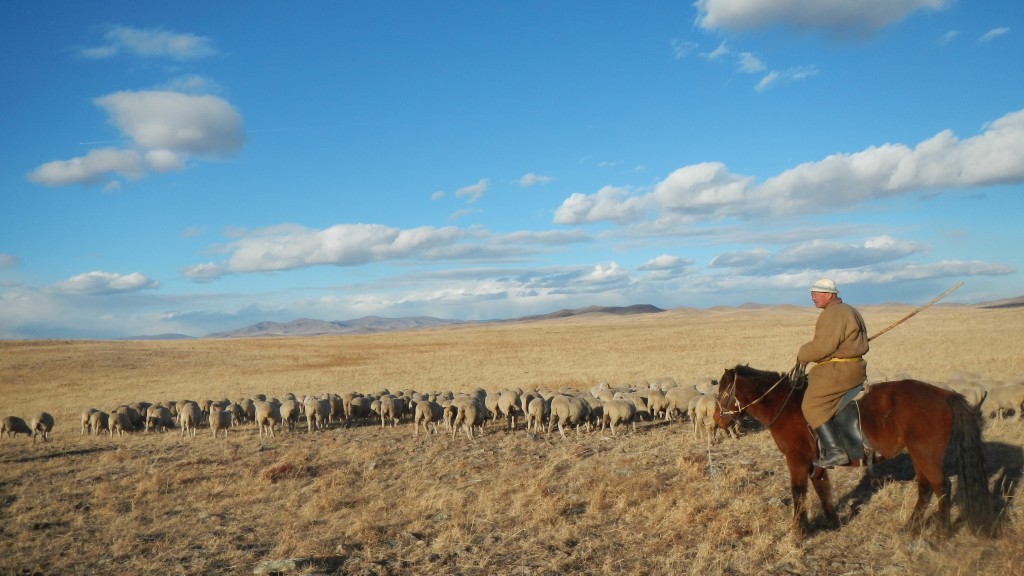
Herder Poloo, with the government herd of merino sheep in Orhon soum, Bulgan aimag in November 2014. BioRegions consulted with Poloo and soum and aimag officials about recruiting a young herder to relieve him and exploring feasibility of establishing a merino wool products industry.
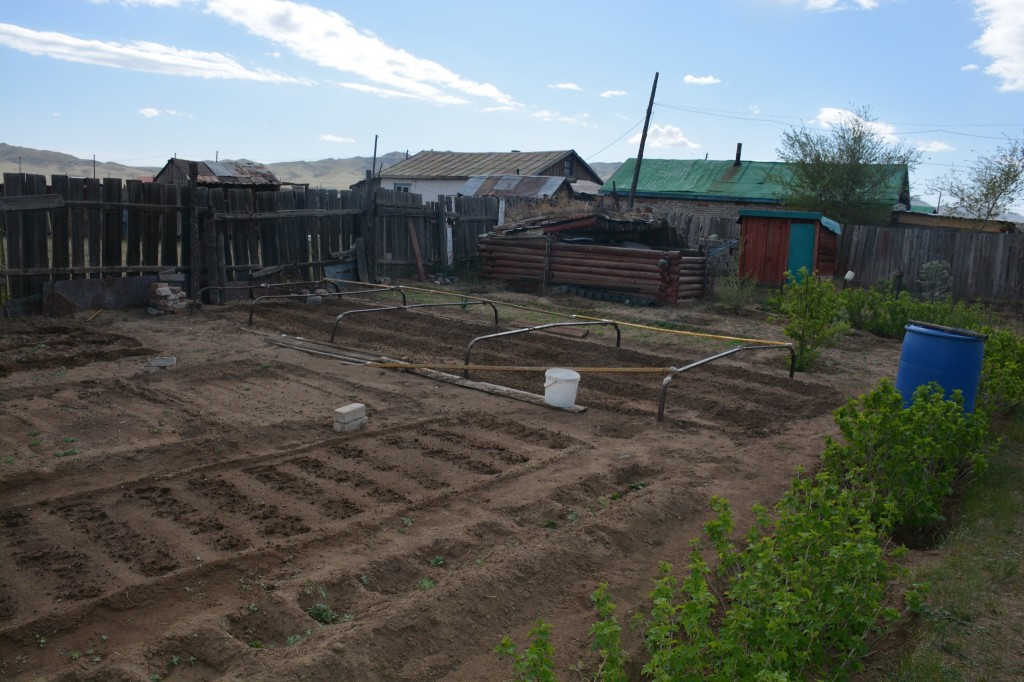
Awards were given to three well-kept and innovative haashas in Orhon Soum, including this one with garden beds and hedges of currants. (Photo credit: Cliff Montagne)